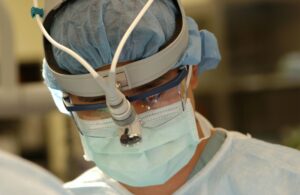Early detection is one of the most important factors in successfully treating most types of cancer. Access to care has proven an inequitable proposition for millions of Americans, and inequality laid bare during the COVID-19 pandemic. New at-home testing could reduce social inequalities for several types of oral and throat cancers.

How Are Oral Cancers Detected?
In most cases, mouth and throat cancers are often identified through visual examinations with healthcare providers. That means patients need to have regular access to regular preventative healthcare visits, which can be expensive even for individuals with insurance and out of reach for those without insurance.
It also means that the lesions or tumors must be large enough to be seen by the naked eye. The result means patients are more likely to discover their oral cancers at later stages, increasing the risk of cancer having already spread and complicating treatment options.
This test doesn’t wait. Instead, researchers explored the link between specific types of oral bacteria and the presence of cancer lesions. Their goal is to use natural oral flora as an early indicator of potential cancer risk. It’s not an exact science; researchers aren’t sure if certain genetic characteristics of bacteria cause oral cancer or are present when exposed to pre-existing, early-stage oral cancer. Still, their presence could serve as a vital early signal of problems.
Related Content: What Is Cervical Cancer?
How The Oral Cancer Screening Test Was Designed
Researchers gathered genetic information from nearly 1,000 patients, including those with oral or throat cancer. This body of data was used to teach a machine learning model that ultimately identified 88 unique changes in gene expression. It also discovers 182 genetic features from oral bacteria, considered to be a sort of ‘canary in the coal mine’ for identifying oral cancers.
How It Was Tested
The test used 230 samples, of which 82 were drawn from individuals with a confirmed cancer diagnosis. Researchers found their test identified 90% of samples from cancer patients and saw a 95% accuracy rate for individuals without a confirmed diagnosis.
Throat and Oral Cancer Statistics
Annual oral cancer diagnoses are expected to exceed 54,000 new cases in 2022 with a further 20,640 esophageal cancer diagnoses as well. These cancers are much more treatable when identified early; normal five-year survival rates are 68 and 20.6%, respectively. However, early detection improves those rates to 86% and 47%.
The Future of At-Home Cancer Testing
Some specialists were quick to point out that this test doesn’t diagnose cancer but tests for likely signals of early cancer development. Even if cancer is present, the lesions or tumors will likely be too small for visual confirmation or biopsy.
Still, it may offer a way for those with higher risks of mouth and throat cancers to identify changes in bacterial make-up and seek out regular screenings or find more advanced options. These types of tests also build a stronger knowledge base that may lead to more accurate at-home testing for more cancer types. For now, oral cancer screenings are most valuable when conducted by healthcare professionals in-person; we need to make access a reality for more people.
Stay in the know about the latest cancer prevention and cancer treatment news. Learn how we do our work and consider supporting Less Cancer.


Leave A Comment
You must be logged in to post a comment.